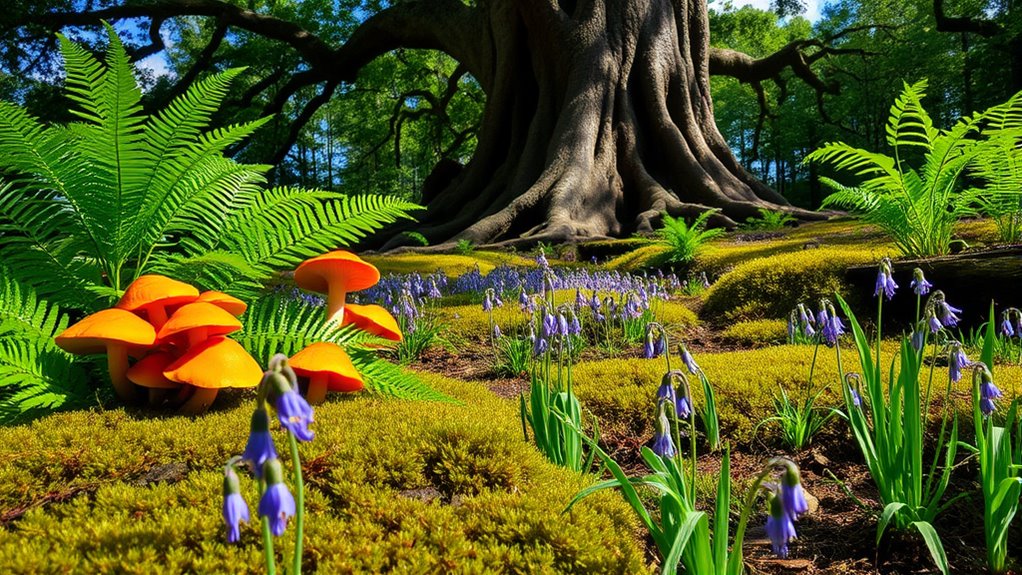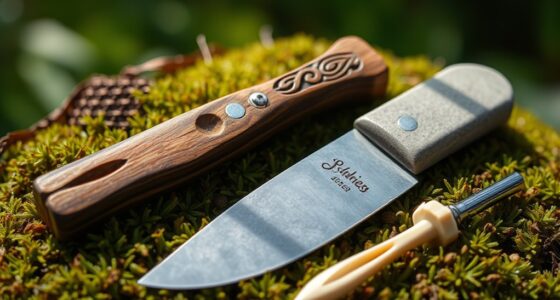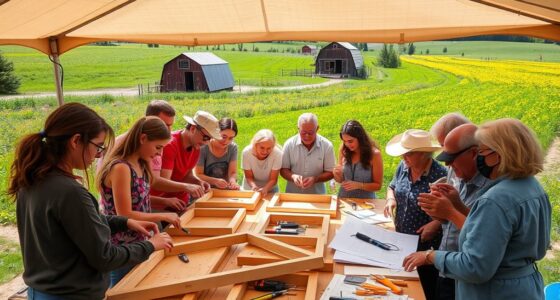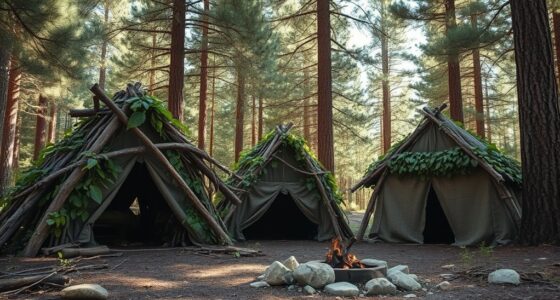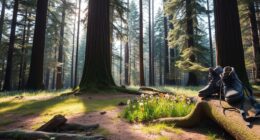A new study uncovers some of the best edible plants in North American forests. You’ll find tree nuts like walnuts and acorns, which are packed with energy. Wild berries such as blackberries and blueberries provide essential vitamins, while greens like dandelion and lamb’s quarters can boost your nutrient intake. Edible flowers and aquatic plants offer unique flavors too. If you want to discover more about gathering and preparing these delicious options, there’s plenty more to explore.
Key Takeaways
- Tree nuts like walnuts and chestnuts are nutrient-dense, providing essential fats and proteins in fall foraging.
- Wild berries, including blackberries and blueberries, are rich in vitamins and ideal for snacking during late summer and early fall.
- Common wild greens such as dandelion and lamb’s quarters offer vitamins A and C and can be consumed raw or cooked.
- Edible flowers like fireweed and wild violets add unique flavors and colors to dishes, enhancing culinary experiences.
- Aquatic plants and roots, including cattails and wild leeks, are sustainable food sources found in wetlands and ponds.
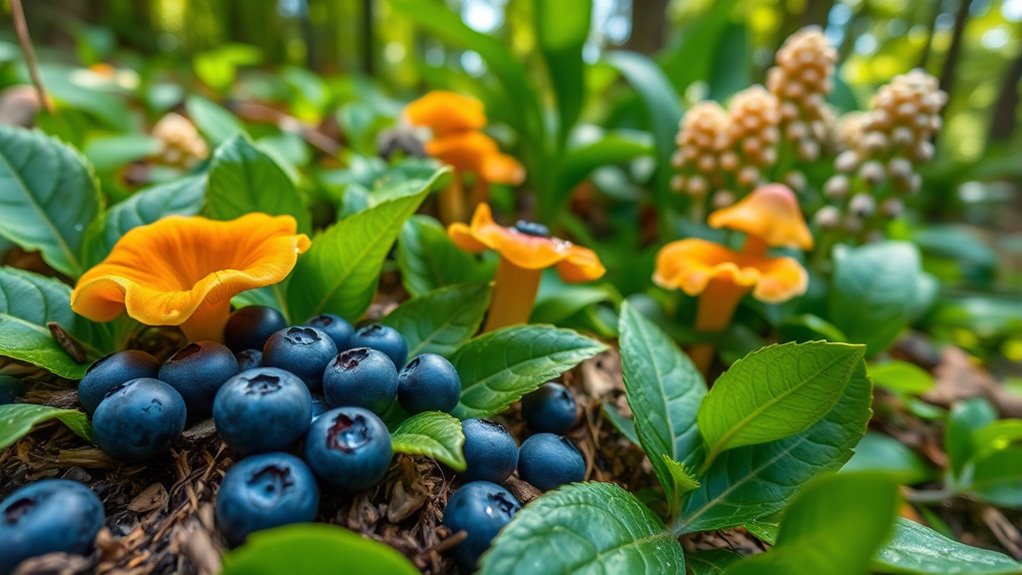
When you explore North American forests, you’ll discover a treasure trove of edible plants that not only nourish but also enhance your outdoor experience. From tree nuts to wild greens, each category offers unique flavors and nutritional benefits.
Tree nuts like walnuts, chestnuts, and acorns are calorie-dense survival foods that you can gather in the fall. Rich in fats and proteins, they provide essential energy during your adventures. Just remember, acorns need to be leached to remove tannins before you can enjoy their nutty flavor.
As you stroll through the underbrush, keep an eye out for wild berries. Blackberries, raspberries, and blueberries typically thrive in disturbed areas, making them easy to spot. These juicy delights are packed with vitamins and antioxidants, perfect for snacking or turning into homemade jams and jellies.
Peak berry season runs from late summer to early fall, so plan your foraging trips accordingly to make the most of these sweet treats.
Don’t overlook the wild greens that flourish in the spring. You’ll find dandelion, lamb’s quarters, and miner’s lettuce readily available, providing a burst of vitamins A and C. These greens can be eaten raw in salads or cooked in sautés and soups. They’re an essential food source after winter, so seize the opportunity to incorporate them into your meals.
Additionally, edible flowers like fireweed and wild violets are both beautiful and nutritious. Fireweed, in particular, is rich in vitamins and can be enjoyed raw or cooked. Use these flowers to elevate your dishes with unique flavors and vibrant colors.
However, be cautious, as some flowers can be toxic. Proper identification is key, so familiarize yourself with the safe options.
Remember to check ponds and wetlands for aquatic plants like cattails and watercress. Cattail shoots are versatile and can be eaten raw or cooked, while watercress adds a peppery kick to salads and sandwiches.
Just make sure you’re harvesting from clean water sources to avoid contamination.
Lastly, edible roots and tubers like wild leeks and Jerusalem artichokes offer culinary gems hidden beneath the forest floor. Wild leeks bring a mild onion flavor to your dishes, while Jerusalem artichokes are nutrient-rich and can be roasted or mashed.
Practicing sustainable harvesting techniques guarantees these plants remain abundant for future foragers.
Frequently Asked Questions
Are There Any Poisonous Plants That Resemble Edible Ones?
Absolutely, there are several poisonous plants that might fool you.
Take hemlock, for instance—it can easily be mistaken for parsley or wild carrot.
Then there’s moonseed, which looks like wild grapes but is toxic.
Even spurge resembles purslane, hiding its dangerous seeds.
If you’re not careful, you could face serious consequences.
Always double-check your plant identification, consult guides, and learn to recognize the subtle differences to keep yourself safe.
How Can I Safely Forage for These Plants?
To safely forage for edible plants, start by familiarizing yourself with their visual characteristics.
Always carry a reliable foraging guide to help distinguish between edible and toxic species.
Begin with small amounts to check for any allergic reactions, and use the Universal Edibility Test for new plants.
Avoid areas treated with chemicals, and respect local laws.
Join foraging workshops to deepen your knowledge and connect with experienced foragers for valuable tips and support.
What Time of Year Is Best for Foraging?
When it comes to foraging, timing’s everything. Early spring’s your golden opportunity for tender greens like dandelion and garlic mustard.
Late spring’s perfect for ramps, especially in rich, moist soil.
As summer rolls in, keep your eyes peeled for mushrooms like Chicken of the Woods.
Fall’s also a great time for gathering. Just remember to stay aware of local regulations and practice sustainable harvesting to keep nature’s bounty thriving!
Can I Grow These Edible Plants at Home?
You can definitely grow many edible plants at home, but it depends on your climate and space.
Consider varieties like linden trees for their leaves and flowers, or mulberry trees for their fruit.
Make sure you’ve got the right soil and water conditions, too.
Keep in mind local regulations that might affect what you can plant.
With the right care, you’ll enjoy fresh, homegrown edibles right from your garden!
What Are the Nutritional Benefits of These Edible Plants?
Edible plants offer numerous nutritional benefits that can enhance your diet. They’re often rich in protein, fiber, vitamins, and essential micronutrients, which support your overall health.
Consuming these plants boosts antioxidant levels, helping to prevent chronic diseases and supporting your immune system.
Plus, foraging for wild edibles adds variety to your meals, making your diet more interesting and nutritious. Incorporating these foods can greatly improve your dietary quality and well-being.
Conclusion
In the diverse landscapes of North American forests, you’ll find a treasure trove of edible plants waiting to be discovered. Whether it’s foraging for wild berries or gathering nuts, remember that “nature provides for those who observe.” By exploring these natural offerings, you not only enrich your meals but also deepen your connection with the environment. So, grab your basket and head out; there’s no telling what delicious surprises await you in the woods!

